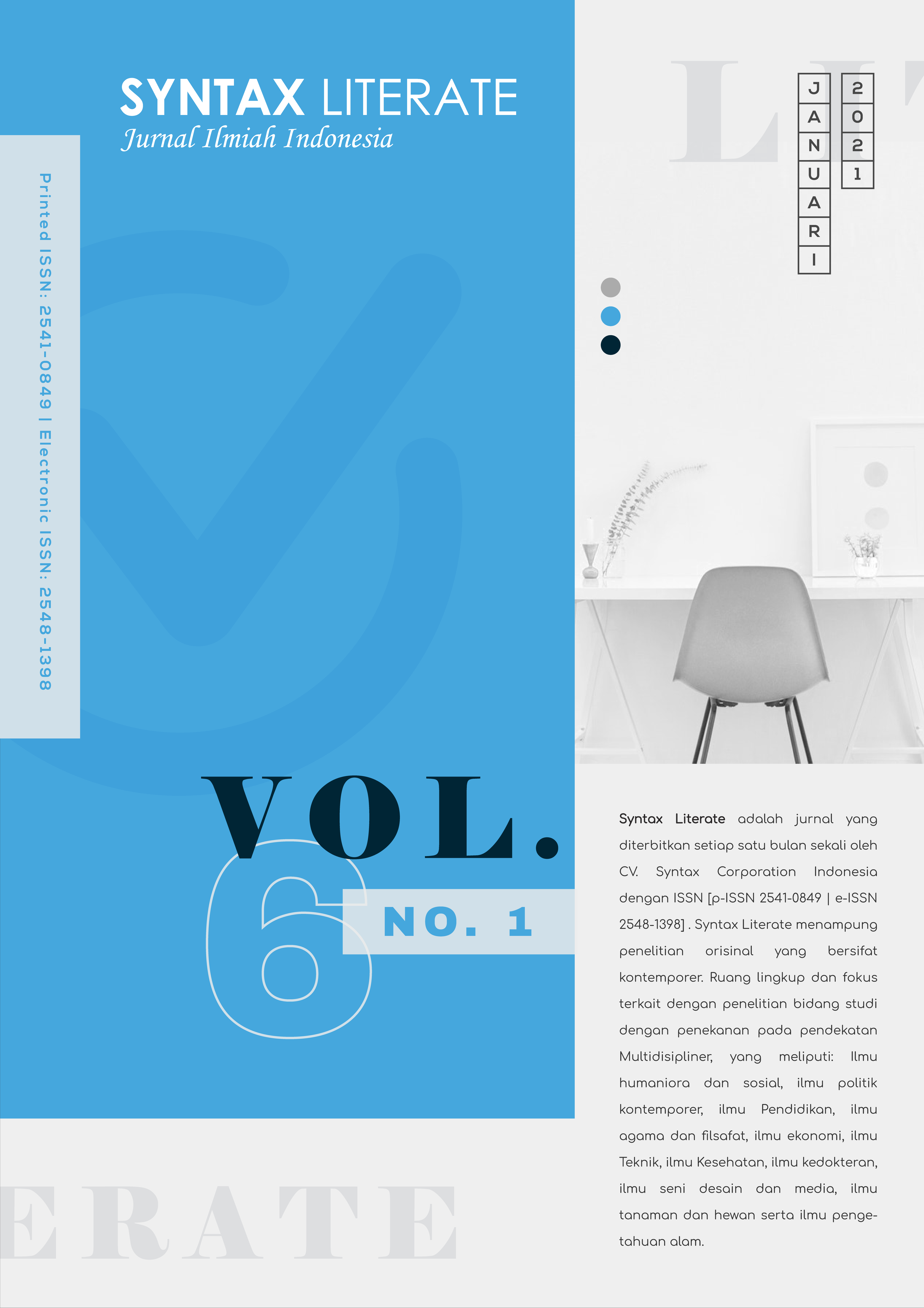Pengaruh Ekstrak Daun Moringa Oleifera terhadap Mean Platelet Volume dan Neutrophil-To-Lymphocyte Ratio pada Pasien Autoimun
Abstract
Penelitian ini bertujuan untuk mengetahui pengaruh ekstrak MO terhadap MVP dan NLR pada pasien autoimun. Metode penelitian yang digunakan adalah eksperimental yang dilakukan pada 30 pasien autoimun yang terdiri dari 28 pasien lupus dan 2 pasien rheumatoid arthritis di Poliklinik Reumatologi RSUD Moewardi pada Januari-Juli 2020. Pasien dikelompokkan menjadi dua, yaitu kelompok perlakuan dan kontrol. Pasien kelompok perlakuan mendapat 2gram ekstrak MO per hari, sedangkan pada kelompok kontrol mendapat plasebo. Perlakuan dilakukan selama 4 minggu, Pemeriksaan MPV dan NLR menggunakan haemositometer. Analisis statistik dilakukan dengan menggunakan uji-T berpasangan dan uji-T independen. Nilai p dianggap signifikan ketika p <0,05. Hasil penelitian menunjukkan bahwa MO menurunkan MPV (delta MPV = 4.141; r = 0.656; p = 0.02) dan NLR (delta NLR = 4.1391; r 0.489; p-value = 0.04). dapat disimpulkan MO menurunkan MPV dan NLR pada pasien autoimun.
Downloads
References
Adeyemi, & C. Elebiyo, (2014) “Moringa oleifera Supplemented Diets Prevented Nickel-Induced Nephrotoxicity in Wistar Rats,†Journal of Nutrition and Metabolism, pp. 1–8. https://doi.org/10.1155/2014/958621.
Attakpa, A. Bertin, W. Chabi, M. Ategbo, B. Seri, & A. Khan, (2017) “Moringa oleifera-rich diet and T cell calcium signaling in spontaneously hypertensive rats,†Physiological Research, vol. 66(5), pp. 753–767.
Berkovich, G. Earon, I. Ron, A. Rimmon, A. Vexler, & S. Lev-Ari, (2013) “Moringa Oleifera aqueous leaf extract down-regulates nuclear factor-kappaB and increases cytotoxic effect of chemotherapy in pancreatic cancer cells,†BMC Complementary and Alternative Medicine, vol. 13(1), pp. 212. https://doi.org/10.1186/1472-6882-13-212.
Coliccio, T. Ohashi, A. Brunson, & S. Jesmin (2015), “Moringa oleifera’s Whole Methanolic Extract Attenuates Levels of Pro-inflammatory Markers in the Cervix of Preterm Labor Mice Models,†The FASEB Journal, vol. 29 (1), pp. 721- 742.
Fathir, M. Rifai, & Widodo, (2014) “Activity of aqueous leaf extract of horseradish tree on helper t- cell and cytotoxic t- cell in mice infected with salmonella thypi,†Jurnal Veteriner vol. 15, pp 114-122, March.
Fard MT, Arulselvan P, Karthivashan G, Adam SK, Fakurazi S (2015). Bioactive extract from moringa oleifera inhibits the pro-inflammatory mediators in lipopolysaccharide stimulated macrophages. Phcog Mag;11:556-63
Fitch, (2016). Moringa oleifera whole methanolic leaf extract attenuates levels of angiogenic factors in the cervix of preterm labor mice models, Appalachian State University.
Kasper, D. L., & Harrison, T. R. (2018). Harrison's principles of internal medicine. New York: McGraw-Hill, Medical Pub. Division
Lawrence, (2009) “The Nuclear Factor NF- B Pathway in Inflammation,†Cold Spring Harbor Perspectives in Biology, vol. 1(6), a001651–a001651. https://doi.org/10.1101/cshperspect.a001651.
Nurhasan Agung Prabowo, Arief Nurudhin, Salma Asri Novia (2021) Correlation Between Renal Activity Index and C3 Complement Expression in Mouse Lupus Nephritis Model. Advances in Health Sciences Research. Pp 75-79.
Ouédraogo, A. Lamien-Sanou, N. Ramdé, S. Ouédraogo, P. Zongo, I. Guissou, et al., (2013) “Protective effect of Moringa oleifera leaves against gentamicin-induced nephrotoxicity in rabbits,†Experimental and Toxicologic Pathology, vol. 65(3), pp. 335–339. https://doi.org/10.1016/j.etp.2011.11.006.
Ray, J. Wolf, & N. Mowa, (2017), “Moringa oleifera and inflammation: A mini-review of its effects and mechanisms,†Acta Horticulturae, pp. 317–330. https://doi.org/10.17660/ActaHortic.2017.1158.36.
Rachmawati & M. Rifa’i, (2014)“In Vitro Immunomodulatory Activity of Aqueous Extract of Moringa oleifera Lam. Leaf to the CD4 +, CD8+ and B220+ Cells in Mus musculus,†The Journal of Experimental Life Sciences, vol. 4(1), pp. 15–20. https://doi.org/10.21776/ub.jels.2014.004.01.03.
Saleem A, Saleem M, Akhtar M. (2019). Antioxidant, anti-inflammatory and antiarthritic potential of Moringa oleifera Lam: An ethnomedicinal plant of Moringaceae family. South African Journal of Botany; 246-256
Soliman, M. Sherif, M. Ghanima, A. El-Badawy, (2018) “Neutrophil to Lymphocyte and Platelet to Lymphocyte Ratios in Systemic Lupus Erythematosus: Relation With Disease Activity and Lupus Nephritis,†Reumatol Clin, vol. 18, August.
Tan, P. Arulselvan, G. Karthivashan, & S. Fakurazi, (2015) “Moringa oleifera Flower Extract Suppresses the Activation of Inflammatory Mediators in Lipopolysaccharide-Stimulated RAW 264.7 Macrophages via NF- κ B Pathway,†Mediators of Inflammation, pp. 1–11. https://doi.org/10.1155/2015/720171.
Tutuncu, (2013) “The Definition and Classification of Systemic Lupus Erythematosus,†in Wallace DJ, Bevra HH (Ed.), DUBOIS Lupus Erythematosus and Related Syndromes, Philadelpia: Saunders, vol. 8, pp. 25.
Waterman, P. Rojas-Silva, B. Tumer, P. Kuhn, J. Richard, S. Wicks, et al.(2015),“Isothiocyanate-rich Moringa oleifera extract reduces weight gain, insulin resistance, and hepatic gluconeogenesis in mice,†Molecular Nutrition & Food Research, vol. 59(6), pp. 1013–1024. https://doi.org/10.1002/mnfr.201400679.
Wu, Y. Chen, X. Yang, L. Chen, Yang, (2016) “Neutrophil-to-lymphocyte ratio (NLR) and platelet-to-lymphocyte ratio (PLR) were associated with disease activity in patients with systemic lupus erythematosus,†Int Immunopharmacol, vol. 36, pp. 94-99, July.
Zainal, (2009) Reumatologi Klinis Praktis, Surakarta: UNS Press.











